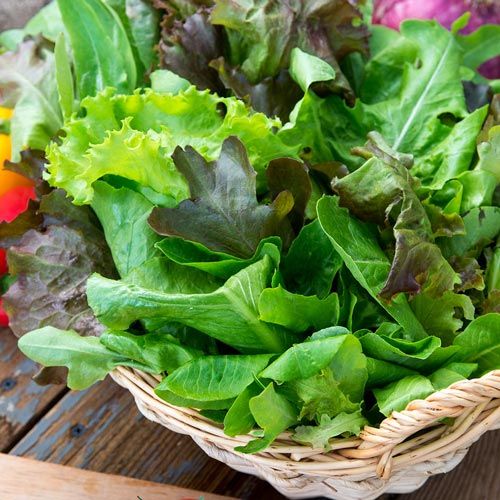It’s true that there is beauty in simplicity, and this applies to gardens, too. For someone with lots of time and space, growing dozens of vegetables, herbs and flowers can be a mix of enjoyment and exercise. But if you have limited space, fear not, ye child of the garden! You can still have a nice range of both edible and visual treats.
This is why we have started a new series here at Gurney’s Blog called “The Minimalist Garden.” Each month, we will discuss ways you can simplify and organize different aspects of your garden! Today’s entry: Vegetable seeds!
If you have a garden space, you can easily get by with a 4’ X 4’ area. No garden? No problem. Just get a half a dozen large pots, about 18-24” across the top, and fill ‘em with potting soil. Vegetables like lots of light, so both garden areas and pots need to be in a sunny spot.
Fresh veggies have lots of advantages. You know where they came from, you know what was put on them, and you will never get anything fresher. Ideally, you’ll want to start them from seed, so that you can be in complete control of your garden edibles. That’s why we’re focusing on vegetable seeds! Some varieties are started indoors, while others are started outdoors. Starting seeds indoors gets a headstart on the gardening season, because this can be done before the last frost.
So what are you going to grow? Well, that’s up to you, of course. I like to grow lettuce, tomatoes, radishes, and maybe some spinach, but that’s me. Maybe you could try a pepper? Those are always fun to grow.
 Okay, so let’s assume lettuce is on your list (since it’s so easy to grow from seed). You can start lettuce as soon as winter’s last frost has passed (now, for most areas). First, moisten the soil. Next, get a small piece of wood, like a ruler. Press the edge into the surface to make a tiny valley. Sprinkle the seeds into your mini-valley ever so gently; try to get them about a half-inch apart. Press the soil back over them so they are about a quarter-inch deep.
Okay, so let’s assume lettuce is on your list (since it’s so easy to grow from seed). You can start lettuce as soon as winter’s last frost has passed (now, for most areas). First, moisten the soil. Next, get a small piece of wood, like a ruler. Press the edge into the surface to make a tiny valley. Sprinkle the seeds into your mini-valley ever so gently; try to get them about a half-inch apart. Press the soil back over them so they are about a quarter-inch deep.
Water lightly, and wait a few days for the seedlings to appear. When they are about 2” high, you’re ready for your first garden-fresh salad! You have to thin them out anyway, so might as well enjoy the greens. You’ll want to clip the plant down to about the soil level. About a week later, do it again, removing every other plant.
Lettuce and spinach will re-grow if you cut them about 1-1/2” above the ground, just above the heart of the plant. This method will get you several salads per plant. You can even sow the lettuce and spinach seeds at different times so you can enjoy fresh salad uninterrupted!
 The tomato varieties best suited to a small space are the cherry types. They come in all kinds of colors, and they are crazy prolific. Most cherry tomatoes need to be tied to a stake, and they’re very easy to start from seed.
The tomato varieties best suited to a small space are the cherry types. They come in all kinds of colors, and they are crazy prolific. Most cherry tomatoes need to be tied to a stake, and they’re very easy to start from seed.
Radishes come in three varieties: the familiar round, red balls; longer French types that look like red baby carrots; and Japanese daikon radishes. The first two pop up and mature with a couple weeks, while daikon takes twice as long. For a constant supply, sow more seed every two weeks, and make sure you thin them out, or they’ll get spindly roots that won’t fill out.
With these few plants, you can legitimately call yourself a vegetable seed gardener! Now go enjoy yourself a fresh and wholesome harvest!

